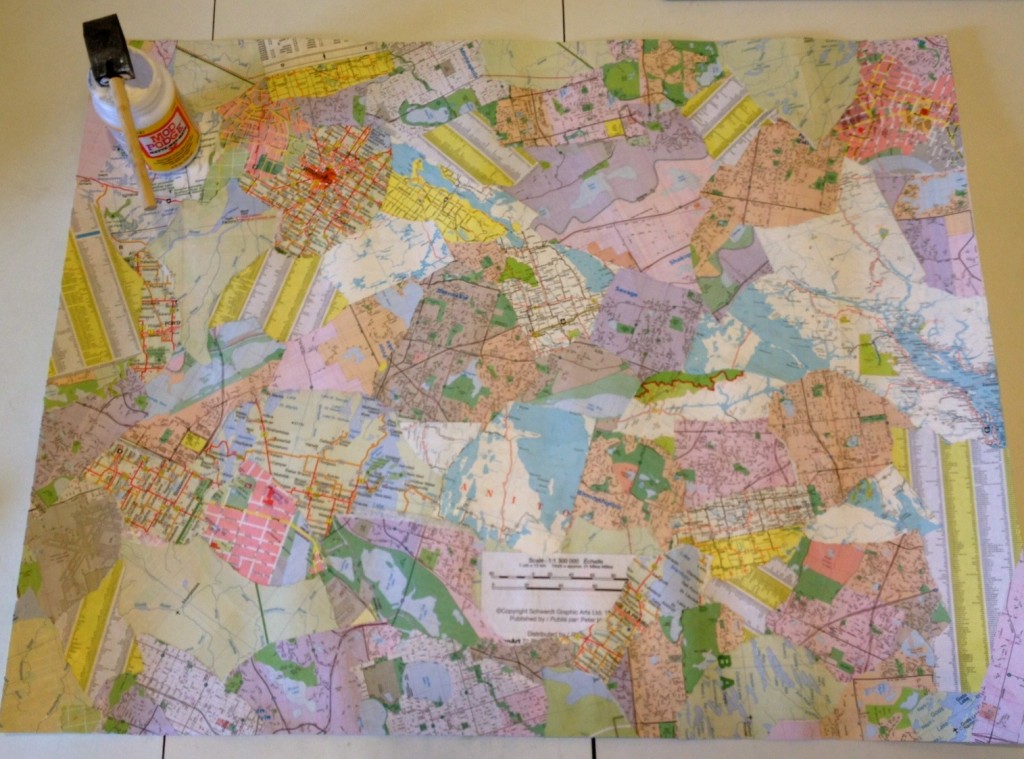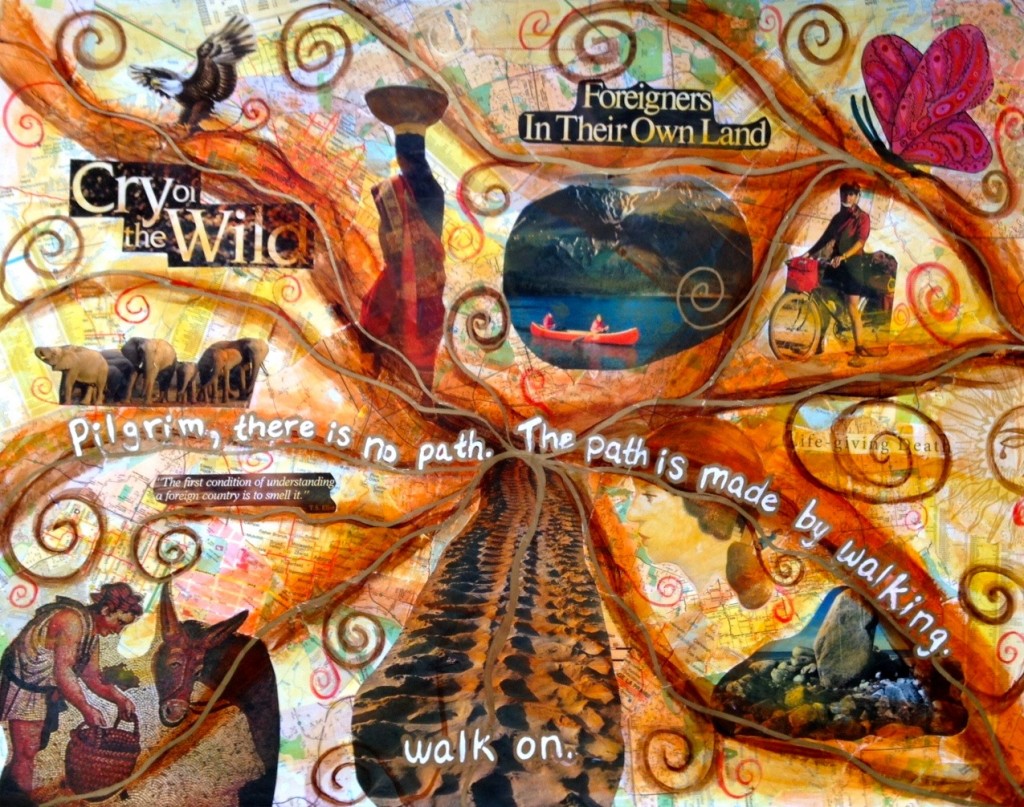Unclear vision and a fragile thread
The Way It Is
There’s a thread you follow. It goes among
things that change. But it doesn’t change.
People wonder about what you are pursuing.
You have to explain about the thread.
But it is hard for others to see.
While you hold it you can’t get lost.
Tragedies happen; people get hurt
or die; and you suffer and get old.
Nothing you do can stop time’s unfolding.
You don’t ever let go of the thread.
~ William Stafford ~
In order to ensure that Theseus would find his way back out of the labyrinth (which he entered in order to slay the minotaur and free his people), Ariadne gave him a ball of thread that he could unravel on the way in and follow on the way out.
Much of my life feels like a version of Theseus’ journey and Stafford’s poem. I’ve been following a thread that’s hard for others to see, but that keeps me from getting lost even when tragedies happen and people get hurt. Stumbling through a dark labyrinth, I often can’t see more than five feet in front of me, but I can feel the light touch of the thread in my hand that invites me forward.
A conversation with a client yesterday reminded me of this thread and how it has sustained me over the years. She was lamenting the fact that, unlike others who seem so focused on their goals, she could never see a clear vision for her life or her work. She had lots of interests and passion, but couldn’t seem to shape those into a business plan or “elevator speech” that would help her make sense of her work to other people. On top of that, grief had rearranged her recently, so she barely recognized herself some days.
The conversation reminded of the time, five years ago, when I was in a similar place. Back in 2012, when I was still struggling to make this business viable, my mom was dying and my marriage was crumbling. I was afraid, angry, and lost. Any vision I thought I’d had for my unfolding future seemed like nothing more than a mirage that had vanished from the horizon. I’d started looking for part time work, afraid I was failing at self-employment because I hadn’t mastered those things the business experts tell you to do, like envisioning my target audience, having clear goals, or writing solid business plans.
Up until that time, I’d often made vision boards, like many good life coaches do, collecting and collaging visual images that represent my unfolding vision. But that process, like so many others, had failed me. No matter how many vision boards I made, my work still felt unfocused and my future was still a mirage. The pending death of my mom and my marriage only compounded the situation.
Frustrated and angry, and feeling betrayed by the practices I’d adopted and coached other people to use, I turned to destruction. I started tearing up maps. Here’s what I wrote at the time:
Tearing up old maps can feel surprisingly cathartic when there’s no roadmap for the journey you’re traveling along. I tore and I placed and I glued. I shredded roads and lined them up with wasteland. I tore up countries and provinces. I cut lakes in half. I destroyed international borders. I had no idea what was emerging, but it felt good to destroy.
What emerged from that was the most helpful collage I’ve ever made – my lack-of-vision board. (The above image.) It was messy and beautiful, with glimpses of the thread I keep hanging onto even when I couldn’t see my way out of the labyrinth.
I’ve never made another vision board since. The lack-of-vision board works better for me – helping me sit in the messiness and practice mindfulness even when I feel lost. The vision board always felt a little forced – like I was trying to bash down the walls of the labyrinth so that I could see where the path was going to take me. Instead, my practice is to hold the thread lightly in my hand and trust that one foot in front of another is the only way to follow the path.
Now, when I look back at the development of my work, I can see that moments like this, when I tore up the map and made meaning out of the mess, were the pivotal moments when my real work was emerging. I was learning to surrender to the liminal space. I was letting go of the vision I thought I should have and letting go of the way I thought I should do my work (in other words, the ways that seemed conventionally acceptable). Instead, I was learning to trust the path as it emerged from the shadows in front of me.
When I coach people now, it looks different from what it did in those early days. I’ve let go of many of the conventions of what coaching is supposed to be and I’ve learned that those liminal spaces are where the really important work happens.
Many in the personal development field want to rush you through those places and into more productivity, light and positive thoughts, but my work is different from that. It’s about holding space for people while they learn to sit with the questions and work through their discomfort with the liminal space.
I couldn’t always tell you what the thread was, back in those moments when I felt lost and confused, but now, when I look back at the places I’ve been, I can see that the thread was there and it helped me get to where I am now. The thread finally became clear when, after my mom died, I wrote the blog post about holding space that went viral and changed my work forever.
All of that time when I was walking through loss and grief and liminal space, I was doing the hard learning that brought me to where I am now.Surrendering to the experience is what allowed me to develop the body of work that is now emerging in my Holding Space Coach/Facilitator Program. Though none of it felt focused at the time, and, as Stafford says, “people wondered about what I was pursuing,” in retrospect I can see that it all threaded together and made a remarkable amount of sense.
Preparing this program has felt like stepping out of the labyrinth into a clear sunny day.
I had to go through all of that to see that what I was meant to develop was not the same kind of coaching or facilitation work that has become common in the personal development world. It is something different, something deeper – something that doesn’t run from complexity, grief, or discomfort but learns to make meaning of it instead.
This work is counter-cultural and doesn’t always make sense in a culture that values linear progress and simple answers, but it’s clear that it responds to a hunger people hardly know they have. When people finally give themselves permission to feel lost, and they no longer feel so alone in the lostness, there’s a new light in their eyes that wasn’t there before.
I am looking forward to working with the participants of the Holding Space Coach/Facilitator Program, because I know that they will bring much wisdom and curiosity to the work. Those who join me will be people who, like me, have walked through pain and grief and despair and have found the source of their own resilience. They will be people who’ve learned to sit with the questions without rushing to find answers. They will be meaning-makers and mystics who embrace the mystery and complexity of life. They will be those who understand what it’s like to stumble through the labyrinth, trusting that the fragile thread in their hand will guide them through the darkness.
This is not a linear path we’re on and there are no easy answers, but when you follow the thread, you can find your way through. Join me?
* * * * *
The Holding Space Coach/Facilitator Program is a new online training program, built in a modular way that offers something for everyone who holds space. Register now for the first session which begins May 29th.
If you are looking for coaching for your own liminal space, sign up now as I will only be receiving new clients for the next 2 weeks. After that, the doors will be closed for several months while I work on the new training program.



